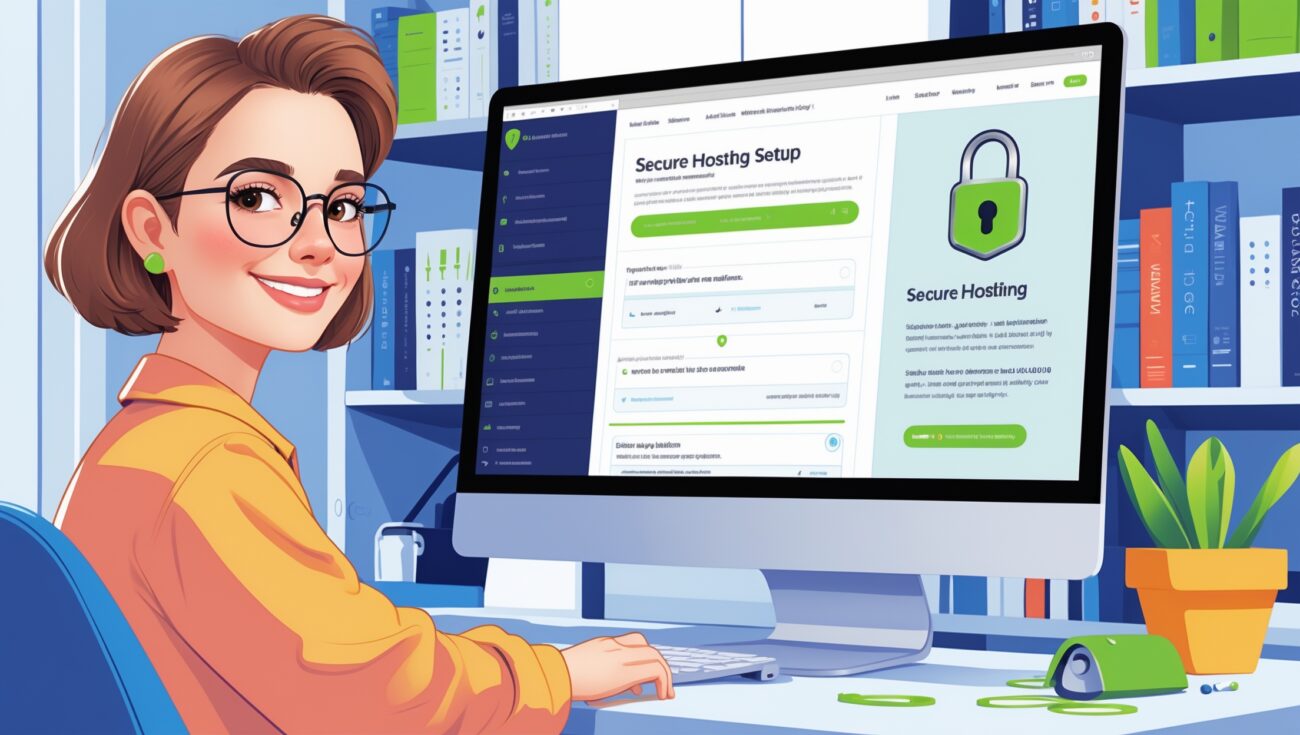How to Set Up Secure Hosting for Your Blog
Setting up secure hosting is crucial for protecting your blog and your readers. Learn how I secured my blog with reliable hosting, SSL, backups, and more—without technical headaches.

Table of Contents
Why Blog Security Matters
When I first started blogging, I focused on content and design, but I ignored security. That was a mistake. Within weeks, I experienced:
- Hacked login attempts
- Malware infections
- Slower site performance
That’s when I realized secure hosting is not optional—it’s essential. A compromised site can hurt your reputation, SEO, and even your income.
In this guide, I’ll walk you through how I set up secure hosting for my blog, step by step. Whether you’re a beginner or have some experience, these tips will help you keep your site fast, reliable, and protected.
If you want hosting I trust for speed and security, check out SiteGround—the host I personally use.
Step 1: Choose a Secure Hosting Provider
Security starts with your host. Not all hosts are created equal. Look for:
- Strong server infrastructure (SSD storage, Nginx, modern PHP)
- Built-in security features (firewalls, malware scanning)
- SSL certificates included
- Automatic backups
- 24/7 expert support
I chose SiteGround because it provides all of this and more. The built-in tools helped me secure my blog without hiring a developer.
Step 2: Pick the Right Hosting Plan
Not every plan offers the same level of security. I needed:
- Daily backups
- Free SSL
- Malware scanning and removal
- Isolated accounts (to prevent other sites from affecting mine)
SiteGround’s StartUp or GrowBig plans gave me exactly what I needed. They balance cost and security perfectly.
See SiteGround hosting plans here
Step 3: Enable SSL and HTTPS
An SSL certificate encrypts data between your server and your visitors. It’s crucial for security and SEO.
I made sure to:
- Enable free SSL via SiteGround
- Redirect all traffic from HTTP to HTTPS
- Test the certificate using online SSL checkers
After enabling SSL, my site was fully encrypted, giving my readers confidence and improving Google rankings.
Enable SSL with SiteGround here
Step 4: Use Built-In Security Tools
SiteGround provides built-in security features that I use daily:
- Web Application Firewall (WAF) blocks attacks automatically
- Anti-bot AI prevents brute-force login attempts
- Automatic malware scanning detects issues before they spread
These tools mean I don’t have to manually monitor my site 24/7, which saves time and stress.
Step 5: Set Up Automatic Backups
Backups are your safety net. I can’t stress this enough—always have backups.
- SiteGround offers daily backups with one-click restore
- I also keep a secondary off-site backup for added security
- Backups cover databases, files, and emails
When I had a plugin issue, restoring from a SiteGround backup saved my blog in minutes.
Get secure hosting with daily backups
Step 6: Secure WordPress Login
WordPress is powerful, but login attacks are common. I implemented:
- Strong, unique passwords
- Two-factor authentication (2FA)
- Limit login attempts
- Change default admin username
These small steps drastically reduce the risk of unauthorized access.
Step 7: Keep Plugins and Themes Updated
Outdated software is a major security risk. I make it a habit to:
- Update WordPress core regularly
- Update all plugins and themes
- Remove unused plugins and themes
SiteGround’s staging environment helps me test updates safely before going live.
Secure your WordPress site with SiteGround
Step 8: Use a Content Delivery Network (CDN)
A CDN improves speed and security. It distributes content globally and blocks malicious traffic.
- SiteGround offers a free CDN integration
- I enable it for all my pages and assets
- It reduces load time and protects against DDoS attacks
This combination keeps my blog fast and secure worldwide.
Step 9: Monitor Website Security
I monitor my blog daily using:
- SiteGround’s security dashboard
- Security plugins (like Wordfence or Sucuri)
- Uptime monitoring tools
Monitoring allows me to catch threats before they affect visitors.
Step 10: Regular Security Audits
Even with a secure host, I perform quarterly audits:
- Check server logs for unusual activity
- Test backups by restoring a copy
- Scan for malware or vulnerabilities
Doing this ensures my blog remains secure, fast, and reliable over time.
Step 11: Educate Yourself About Security
Security isn’t just about hosting. I also learned:
- Don’t click unknown links or emails
- Use secure Wi-Fi and avoid public networks for admin tasks
- Educate team members if you have collaborators
Combining hosting security with personal security practices keeps my site truly safe.
Step 12: Common Security Mistakes to Avoid
- Skipping SSL – visitors and search engines expect HTTPS.
- Ignoring backups – a single mistake can wipe your blog.
- Weak passwords or no 2FA – easy entry for hackers.
- Outdated plugins/themes – prime targets for attacks.
- Choosing an insecure host – your hosting provider is your first line of defense.
By avoiding these mistakes, my blog is fast, secure, and reliable.
FAQ
Q: Can beginners set up secure hosting?
Yes! With hosts like SiteGround, many security features are automated, making it easy even for beginners.
Q: Will security slow down my site?
No—good hosts like SiteGround optimize for speed and security simultaneously.
Q: How often should I backup my blog?
Daily backups are ideal for active sites, weekly for smaller blogs. SiteGround provides daily automated backups.
Conclusion
Setting up secure hosting for your blog is not optional—it’s essential. I learned that choosing a reliable host like SiteGround, enabling SSL, using built-in security features, and keeping software updated protects your blog, improves speed, and boosts SEO.
If you want to secure your blog the easy way, I recommend:
Set up secure hosting with SiteGround today
With the right host and security practices, your blog will be safe, fast, and ready to grow.

